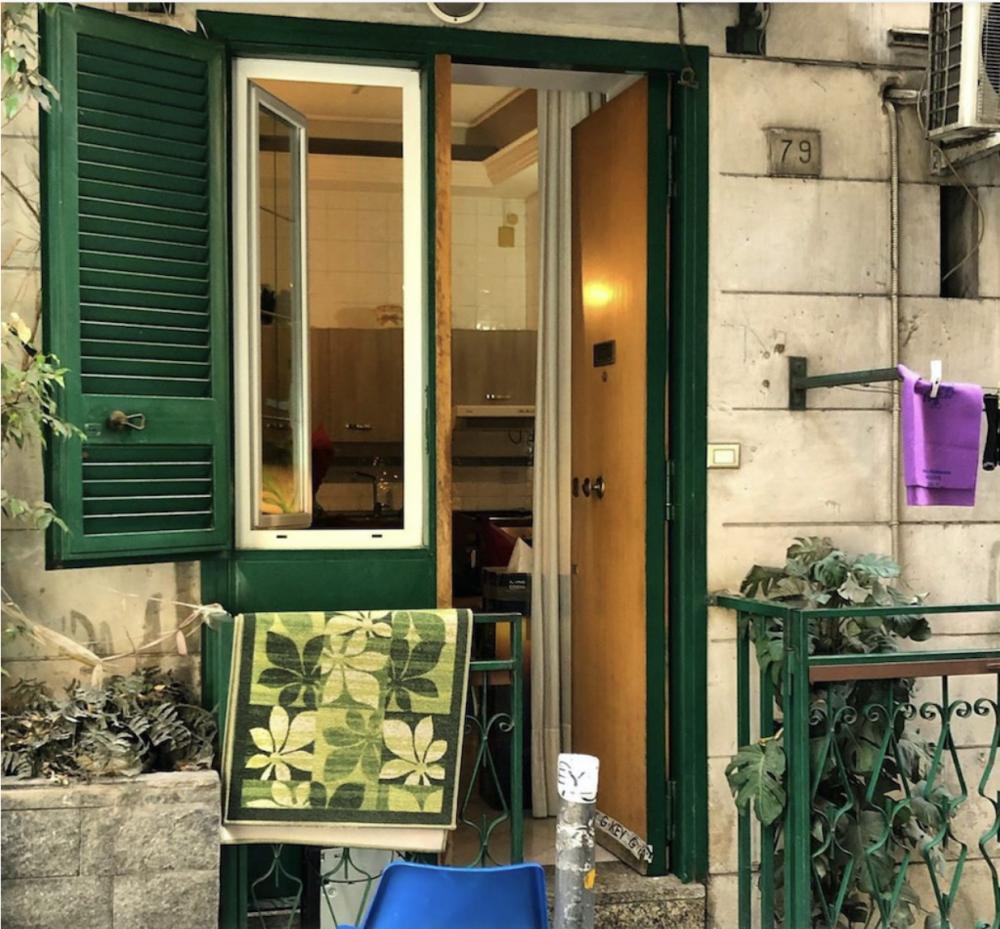Quando si cammina nel dedalo dei vicoli e vicarielli dei quartieri antichi di Napoli (dal Rione Sanità ai Quartieri Spagnoli) è impossibile non notare i celebri Bassi Napoletani che spuntano qua e là ai piani terra degli antichi palazzi. ll basso napoletano (O vascio) è un appartamento che si apre al piano terra degli antichi palazzi partenopei, qui soppalchi fantasiosi e scantinati spesso diventano camere da letto o salottini. La cultura del basso è colorata con finte statue e piante per scongiurare il parcheggio selvaggio di auto o motorini. Il più delle volte, a guardia dei bassi ci sono anziane signore indaffarate nelle più disparate faccende domestiche. A stendere il bucato lavato a mano sulla pubblica via, a lavorare a maglia o a cucinare pizze fritte in improvvisate friggitrici alimentate da bombole a gas. Non è raro che i vicoli, posti di fronte ai bassi, si trasformino in un vero e proprio salotto all′aperto con sedie sistemate per chiacchierare del più e del meno e prendere un caffè. Il basso è un icona dell′antica miseria del popolo napoletano, la sua storia è legato al fenomeno del grande inurbamento della città di Napoli. Tra il XVI e il XVII secolo gli Spagnoli, per evitare lo spopolamento delle campagne circostanti, bloccarono lo sviluppo edilizio cittadino. I nuovi arrivati, per lo più contadini e artigiani, non trovando alloggio in città finirono per adattarsi nei locali al piano terra dei palazzi, li dove fino a quel momento cerano botteghe e depositi. Gli abitatori dei bassi continuarono comunque la loro attività commerciale, e casa e negozio diventarono una sola cosa. Da qui l′espressione napoletana fare casa e puteca. Da allora, i cosiddetti bassi si moltiplicarono a vista d′occhio senza che nessun governo se ne curasse. Nel corso dei secoli sono stati teatro di tragici avvenimenti come le numerose epidemie di peste e colera. Memorabile è la descrizione che ne fece la scrittrice Matilde Serao, che visse per alcuni anni in un basso di Piazzetta Ecce Homo. Case in cui si cucina in uno stambugio, si mangia nella stanza da letto e si muore nella medesima stanza dove altri dormono e mangiano. Non si è sottratto neppure il teatro di Eduardo De Filippo; il grande drammaturgo napoletano, trovò proprio nei bassi la sua fonte di ispirazione. All′esterno di ciascuna di queste case, censite nel lontano 1931, cè una targa di marmo con una scritta significativa Terraneo non destinabile ad abitazione; una frase beffarda che sta a testimoniare una volontà fatta solo di belle intenzioni. I Vasci napoletani non sono più quelli descritti da cronisti e viaggiatori che ne evidenziavano lo squallore e le condizioni di vita al limite del decoro umano. Da qualche anno i bassi napoletani, che per secoli hanno ospitato la popolazione più sfortunata, cambiano pelle e diventano Case vacanze, B&B, Botteghe o ristoranti offrendo unesperienza davvero unica e indimenticabile.
When you walk through the maze of alleys and alleys of the ancient districts of Naples (from the Rione Sanità to the Spanish Quarters) it is impossible not to notice the famous Neapolitan Bassi that pop up here and there on the ground floors of the ancient buildings. The low Neapolitan (O vascio) is an apartment that opens on the ground floor of the ancient Neapolitan palaces, here imaginative mezzanines and basements often become bedrooms or sitting rooms. The culture of the bass is colored with fake statues and plants to ward off the wild parking of cars or mopeds. Most of the time, guarding the basses are elderly ladies busy with the most disparate household chores. Hanging out the hand-washed laundry on the public street, knitting or cooking fried pizzas in makeshift fryers powered by gas cylinders. It is not uncommon for the alleys, placed in front of the lower ones, to turn into a real outdoor living room with chairs arranged to chat about this and that and have a coffee. The bass is an icon of the ancient misery of the Neapolitan people, its history is linked to the phenomenon of the great urbanization of the city of Naples. Between the sixteenth and seventeenth centuries the Spaniards, in order to avoid the depopulation of the surrounding countryside, blocked the building development of the city. The new arrivals, mostly peasants and artisans, finding no accommodation in the city ended up adapting to the premises on the ground floor of the buildings, where until that moment there were shops and warehouses. The low dwellers continued their commercial activity, however, and the house and shop became one. Hence the Neapolitan expression making house and puteca. Since then, the so-called basses multiplied visibly without any government caring. Over the centuries they have been the scene of tragic events such as the numerous epidemics of plague and cholera. The description made by the writer Matilde Serao, who lived for a few years in a bass in Piazzetta Ecce Homo, is memorable. Houses where you cook in an alpine hut, eat in the bedroom and die in the same room where others sleep and eat. Not even the theater of Eduardo De Filippo was stolen; the great Neapolitan playwright found his source of inspiration in the bass. Outside each of these houses, surveyed in 1931, there is a marble plaque with a significant inscription Terraneo not intended for housing; a mocking phrase that testifies to a will made only of good intentions. The Neapolitan Vasci are no longer those described by chroniclers and travelers who highlighted their squalor and living conditions at the limit of human dignity. For some years now the Neapolitan basses, which for centuries have hosted the most unfortunate population, have changed their skin and become holiday homes, B & Bs, shops or restaurants, offering a truly unique and unforgettable experience.












